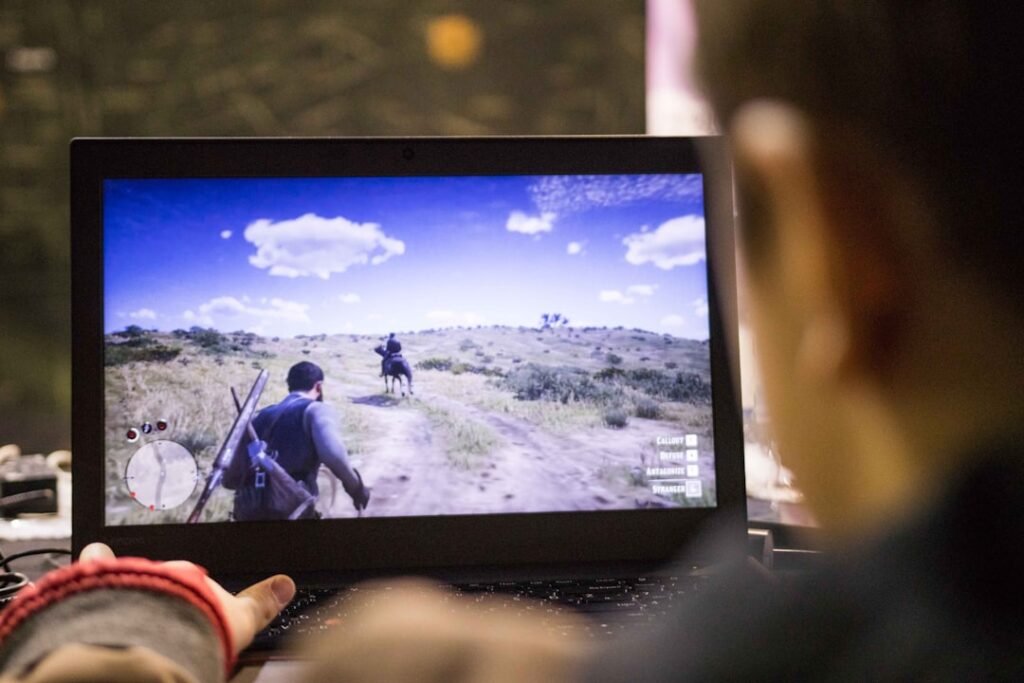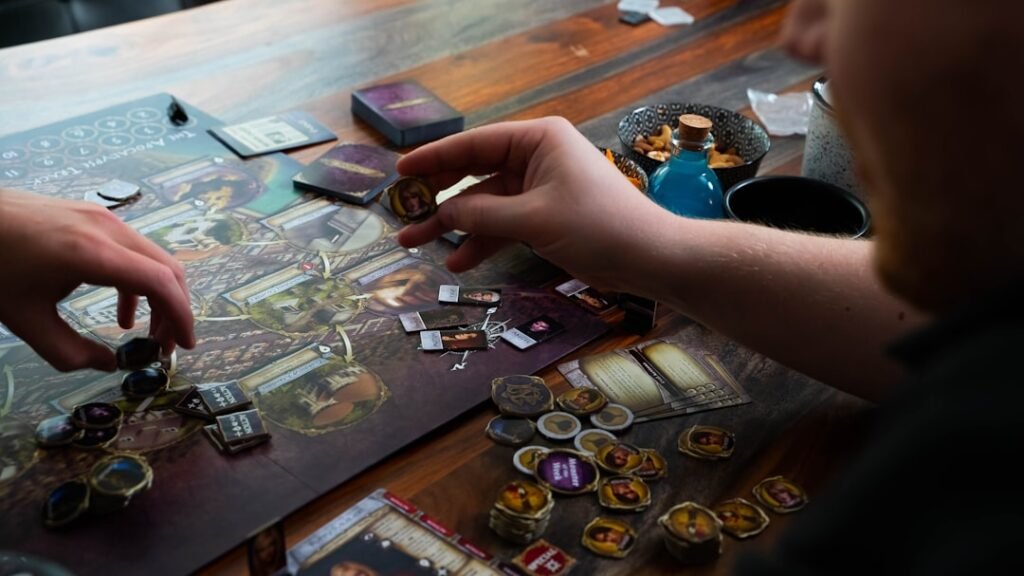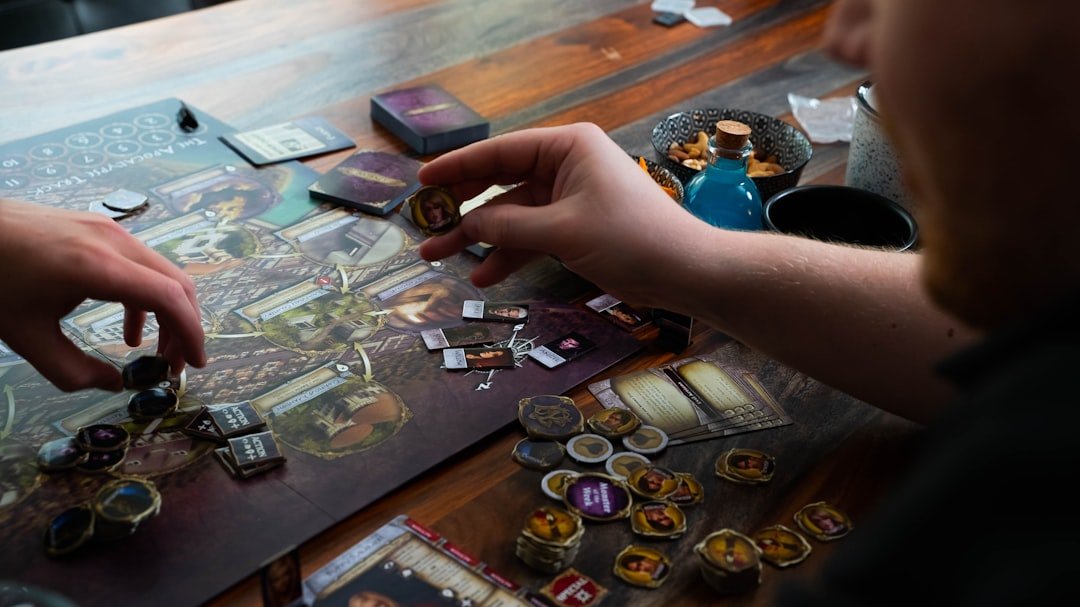Now Reading: The Art of Fear: Clever Sound in Horror Games
-
01
The Art of Fear: Clever Sound in Horror Games
The Art of Fear: Clever Sound in Horror Games

As I delve into the world of horror games, I quickly realize that sound plays a pivotal role in shaping the overall experience. Unlike other genres, horror relies heavily on auditory elements to evoke fear and anxiety. The chilling whispers, sudden crashes, and eerie silences create an atmosphere that can send shivers down my spine.
Sound is not merely an accessory; it is the backbone of the horror experience, guiding my emotions and reactions as I navigate through dark corridors and haunted landscapes. In many ways, sound acts as a character in its own right.
I find myself acutely aware of how sound can influence my perception of the game world, making me more susceptible to fear and tension. This intricate relationship between sound and gameplay is what makes horror games so uniquely compelling.
Key Takeaways
- Sound is crucial in horror games as it enhances the overall experience and immerses players in the game world.
- Atmosphere in horror games is created through sound design, using ambient sounds and music to set the tone and mood.
- Sound is used to build tension and suspense, keeping players on edge and creating a sense of unease.
- Jump scares are incorporated with audio to startle and surprise players, adding to the fear factor in horror games.
- Surround sound is utilized to create an immersive experience, making players feel like they are truly in the game world.
Creating Atmosphere with Sound Design
The Power of Sound Layering
The careful layering of sounds creates a rich tapestry that enhances my overall experience. Moreover, sound design can manipulate my perception of space and distance. A whisper that seems to come from behind me can make my heart race, while the echoing footsteps of an unseen entity can instill a sense of paranoia.
The Importance of Subtle Audio Cues
I often find myself straining to hear subtle audio cues, as they can signal impending danger or hint at hidden secrets within the game. This attention to detail in sound design not only enriches the atmosphere but also reinforces the psychological aspects of fear, making every moment feel charged with potential terror.
Fear and Tension through Sound
The atmosphere of horror games is deeply rooted in the player’s emotional response, and sound design plays a crucial role in evoking fear and tension that defines the horror genre.
Using Sound to Build Tension and Suspense

Building tension in horror games is an art form, and sound is one of the most effective tools at my disposal. As I play, I notice how sound designers skillfully manipulate audio to create an escalating sense of unease. The gradual increase in volume or intensity can signal that something is about to happen, forcing me to brace myself for the unknown.
This anticipation is often more terrifying than the actual scare itself, as I find myself caught in a web of anxiety and dread. The use of silence is equally powerful in building suspense. A sudden drop in sound can create an unsettling void that leaves me feeling vulnerable and exposed. In these moments, I become hyper-aware of every creak and whisper, as if the silence itself is a harbinger of doom.
The interplay between sound and silence keeps me on my toes, making each encounter feel unpredictable and fraught with danger. This delicate balance is what makes horror games so thrilling; I am constantly on edge, waiting for the next auditory cue that will either confirm my fears or lead me into deeper darkness.
Incorporating Jump Scares with Audio
Jump scares are a hallmark of horror games, and audio plays a crucial role in their effectiveness. As I navigate through a dimly lit environment, I often find myself lulled into a false sense of security, only to be jolted by a sudden loud noise or an unexpected auditory cue. The sharp contrast between silence and a sudden cacophony can trigger an instinctive fight-or-flight response, leaving me breathless and startled.
What fascinates me about jump scares is how they rely on timing and pacing. A well-placed audio cue can amplify the shock factor, making the scare feel more impactful. I’ve experienced moments where the build-up—a slow crescendo of unsettling sounds—creates an unbearable tension that culminates in a heart-stopping moment of terror.
This careful orchestration of sound not only elicits a visceral reaction but also reinforces the emotional stakes within the game, making each jump scare feel like a significant event rather than just a cheap trick.
Utilizing Surround Sound for Immersive Experience
The advent of surround sound technology has revolutionized how I experience horror games. With audio enveloping me from all directions, I feel as though I am truly part of the game world. The ability to pinpoint sounds—like footsteps approaching from behind or whispers echoing from nearby rooms—adds an unparalleled layer of immersion that heightens my sense of fear.
This spatial awareness transforms my gameplay experience, making every encounter feel more immediate and visceral. In many horror games, sound designers take full advantage of this technology to create a 360-degree auditory landscape. As I move through different environments, I can hear sounds shifting around me, enhancing my connection to the game world.
This immersive experience not only amplifies the tension but also encourages me to be more cautious and observant. The realization that danger could be lurking just out of sight makes every moment feel charged with potential terror, keeping me engaged and invested in the unfolding narrative.
The Role of Music in Horror Games

Music serves as another vital component in horror games, acting as an emotional guide that shapes my experience. The haunting melodies and dissonant chords create an atmosphere that resonates with my deepest fears and anxieties. As I traverse through eerie landscapes, the music often reflects the emotional tone of the narrative, enhancing my connection to the characters and their struggles.
What strikes me most about music in horror games is its ability to evoke specific emotions without relying on visuals. A slow, mournful tune can instill a sense of loss or despair, while frenetic rhythms can heighten feelings of panic and urgency. The strategic use of music can also signal shifts in gameplay; for instance, a sudden change in tempo may indicate that danger is imminent or that I am entering a particularly tense moment.
This dynamic interplay between music and gameplay keeps me engaged while simultaneously amplifying the emotional stakes.
Implementing Ambient Sounds for Psychological Impact
Ambient sounds are crucial for creating a psychological impact in horror games. These subtle audio elements—like distant thunder, rustling leaves, or faint whispers—serve to immerse me in an unsettling atmosphere that feels both familiar and alien. As I explore dark hallways or abandoned buildings, these ambient sounds create a sense of unease that lingers in the back of my mind, heightening my awareness of potential threats.
I often find myself reflecting on how ambient sounds can evoke memories or feelings from my own life, tapping into universal fears that resonate deeply within me. The sound of dripping water might remind me of isolation or abandonment, while distant cries could evoke feelings of helplessness. This psychological manipulation is what makes horror games so effective; they exploit my own fears and anxieties through carefully crafted audio experiences that linger long after I’ve put down the controller.
Enhancing Fear through Audio Cues
Audio cues are essential for enhancing fear in horror games, serving as both warnings and indicators of danger. As I play, I become attuned to specific sounds that signal impending threats—like the low growl of a monster or the ominous creaking of a door opening. These cues not only alert me to potential dangers but also create an atmosphere of paranoia; I find myself constantly on edge, anticipating what might come next.
The effectiveness of audio cues lies in their ability to evoke instinctual responses. A sudden loud noise can trigger an adrenaline rush, while subtle sounds can instill a sense of dread that lingers in my mind. This constant interplay between expectation and reality keeps me engaged in the game while heightening my emotional investment in the narrative.
Each audio cue becomes a thread woven into the fabric of fear, drawing me deeper into the psychological landscape crafted by the developers.
Balancing Sound and Silence for Maximum Effect
The balance between sound and silence is crucial for maximizing impact in horror games. While loud noises can startle me into submission, moments of silence can be equally powerful in creating tension and unease. As I navigate through dark environments, I often find myself holding my breath during quiet moments, acutely aware that something could happen at any time.
This delicate balance keeps me on high alert, making every sound feel significant. Silence can serve as a canvas upon which fear is painted; it amplifies my senses and makes even the slightest noise feel monumental. A distant whisper or a sudden creak becomes magnified against the backdrop of silence, heightening my emotional response.
This interplay between sound and silence creates a rhythm that draws me deeper into the game world while keeping me engaged with its narrative twists and turns.
The Evolution of Sound in Horror Games
As I reflect on the evolution of sound in horror games, it’s fascinating to see how far we’ve come since the early days of gaming. In the past, sound was often limited to simple beeps and boops; however, advancements in technology have allowed for more complex audio experiences that enhance immersion and emotional engagement. From 8-bit chiptunes to fully orchestrated scores, sound has transformed into a powerful storytelling tool that shapes my experience as a player.
Modern horror games utilize sophisticated sound design techniques that create rich auditory landscapes filled with detail and nuance. The incorporation of surround sound technology has further revolutionized how I experience these games, allowing for an immersive environment where every creak and whisper feels tangible. As developers continue to push boundaries with innovative audio techniques, I eagerly anticipate what new auditory experiences await in future horror titles.
The Future of Sound Design in Horror Games
Looking ahead, I am excited about the future of sound design in horror games. With advancements in technology such as virtual reality (VR) and artificial intelligence (AI), there are endless possibilities for creating even more immersive auditory experiences. Imagine stepping into a VR horror game where every sound feels like it’s happening right next to me—where I can turn my head and hear sounds shift dynamically based on my movements.
Moreover, AI-driven sound design could allow for personalized audio experiences tailored to my unique fears and preferences. By analyzing my reactions to different sounds or scenarios, developers could create adaptive audio environments that respond dynamically to my gameplay choices. This level of interactivity would not only enhance immersion but also deepen my emotional connection to the narrative.
In conclusion, sound is an indispensable element in horror games that shapes my experience as a player. From creating atmosphere to building tension and enhancing fear through audio cues, every aspect of sound design plays a crucial role in crafting unforgettable moments of terror. As technology continues to evolve, I look forward to witnessing how future innovations will further enrich this captivating genre.
One interesting article related to the clever use of sound in horror games is “Mastering Precision: How to Improve Your Aim in FPS Games.” This article discusses the importance of sound cues in first-person shooter games and how they can help players improve their accuracy and precision. By honing in on the subtle audio cues in the game, players can enhance their gameplay and become more successful in FPS games. To read more about this topic, check out the article here.
FAQs
What are some clever uses of sound in horror games?
Some clever uses of sound in horror games include using sound to build tension and create a sense of unease, using sound to indicate the presence of danger or enemies, and using sound to immerse players in the game world.
How does sound contribute to the overall horror experience in games?
Sound contributes to the overall horror experience in games by creating a sense of atmosphere, building tension, and evoking emotional responses from players. It can also be used to guide players and provide important auditory cues.
What are some common sound techniques used in horror games?
Common sound techniques used in horror games include ambient sounds to create a sense of unease, sudden loud noises to startle players, and the use of silence to build tension. Additionally, sound can be used to create a sense of isolation and claustrophobia.
How does sound design impact player immersion in horror games?
Sound design impacts player immersion in horror games by creating a sense of presence and realism within the game world. It can make players feel as though they are truly experiencing the events of the game, leading to a more intense and immersive experience.
Can sound be used to manipulate player emotions in horror games?
Yes, sound can be used to manipulate player emotions in horror games by creating a sense of fear, anxiety, and dread. It can also be used to evoke empathy for characters or to create a sense of urgency and danger.



























